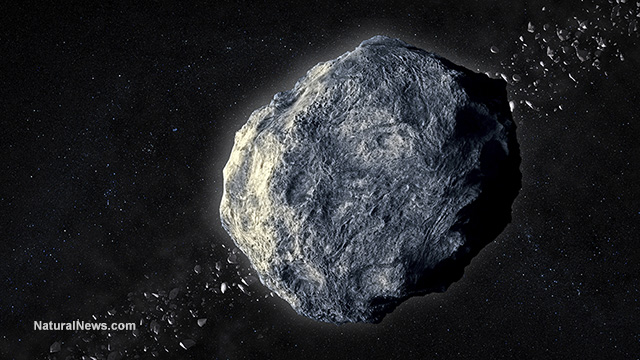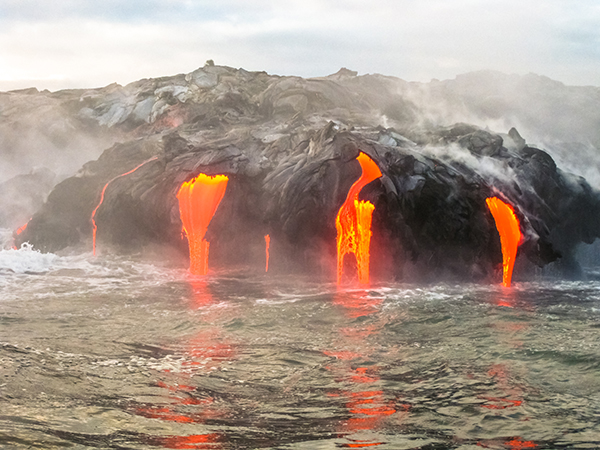Meteorites found in Sahara may be first-ever fragments of Mercury, rewriting planetary history
07/08/2025 / By Cassie B.

- Scientists may have found Earth’s first Mercury meteorites in Tunisia and Morocco, offering clues about the planet’s violent past.
- The meteorites contain rare minerals matching Mercury’s predicted geology and are 4.528 billion years old.
- Critics question their origin due to low plagioclase levels, but supporters argue they may represent Mercury’s ancient, now-lost crust.
- If confirmed, these rocks could reveal Mercury’s formation secrets and why it has an unusually massive metallic core.
- Upcoming BepiColombo mission data may provide further proof by identifying matching surface chemistry.
After decades of searching, scientists may have finally uncovered the first physical evidence of Mercury’s violent past — right here on Earth. Two enigmatic meteorites, discovered in the deserts of Tunisia and Morocco, bear mineral signatures eerily similar to the innermost planet’s scorched surface. If verified, these space rocks would offer humanity an unprecedented glimpse into Mercury’s turbulent formation over 4.5 billion years ago and reveal secrets the planet itself has long since erased.
The Mercury meteorite mystery
For years, planetary scientists faced a glaring anomaly: While hundreds of confirmed Martian and lunar meteorites dot Earth’s surface, none could be definitively traced to Mercury, despite its proximity and crater-laden landscape, which suggests frequent asteroid impacts should have ejected debris toward our planet. Now, researchers analyzing two unusual specimens — dubbed Ksar Ghilane 022 and Northwest Africa 15915 — believe they’ve cracked the case.
These meteorites contain critical fingerprints of Mercury’s predicted geology: iron-poor olivine, pyroxene and oldhamite, a calcium sulfide mineral rarely found in other meteorites. Their oxygen isotopes even match aubrites, a rare meteorite class hypothesized to originate from a Mercury-like protoplanet. But the most tantalizing clue is their age. Radioactive dating places the rocks at 4.528 billion years old, which is older than Mercury’s youngest surface regions by half a billion years. This suggests they could be relics of Mercury’s primordial crust, blasted into space before eons of solar bombardment reshaped the planet.
A cosmic contradiction
Not all evidence aligns perfectly. While Mercury’s surface is thought to be 37% plagioclase, these meteorites contain mere trace amounts. Critics argue this discrepancy casts doubt on their origin. However, supporters counter that Mercury’s crust may have once been far less plagioclase-rich before asteroid impacts exposed deeper, feldspar-heavy layers. This means that these meteorites could reflect an older, now-vanished stratum.
The debate underscores a brutal truth about studying Mercury: Direct verification is nearly impossible — for now. Unlike Mars, where atmospheric gases trapped in meteorites allowed definitive matches, Mercury lacks such distinct markers. Without physical samples from the planet itself, scientists rely on spectral data from orbiters like NASA’s MESSENGER and the ESA-JAXA BepiColombo mission, currently circling Mercury.
Why Mercury matters
Confirming the meteorites’ origin would revolutionize planetary science. Mercury’s bizarre composition — a two-thirds metallic core — defies current models of planetary formation. Studying these fragments could reveal whether Mercury once had a thicker crust before solar winds stripped it away and how its surface weathered temperatures hot enough to melt lead (333°F average). It could also provide new insight into the role of ancient collisions in shaping the solar system’s densest planet.
Moreover, these discoveries are priceless for practical exploration. With missions to Mercury costing billions and requiring seven-year journeys, these meteorites offer a more practical and direct way to study the planet’s surface.
All eyes now turn to BepiColombo, which is set to deliver high-resolution surface scans by 2026. If it identifies regions matching these meteorites’ chemistry, the case for a Mercurian origin becomes compelling. Until then, the scientific community remains cautiously optimistic and deeply intrigued.
This isn’t just about two rocks in a desert. It’s about holding pieces of a planet that defies explanation — a world where temperatures swing from 800 F to -290 F, where the sun looms three times larger than on Earth, and where humanity may finally glimpse the violent birth of our solar system’s most enigmatic world.
Sources for this article include:
Submit a correction >>
Tagged Under:
artifacts, breakthrough, cosmic, discoveries, mercury, meteorites, planets, real investigations, research, solar system, Space, space exploration, space rock
This article may contain statements that reflect the opinion of the author





















